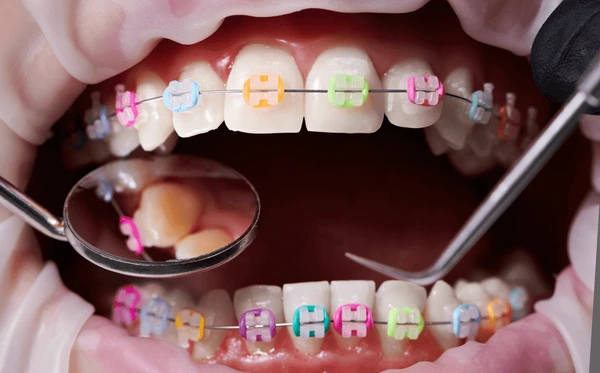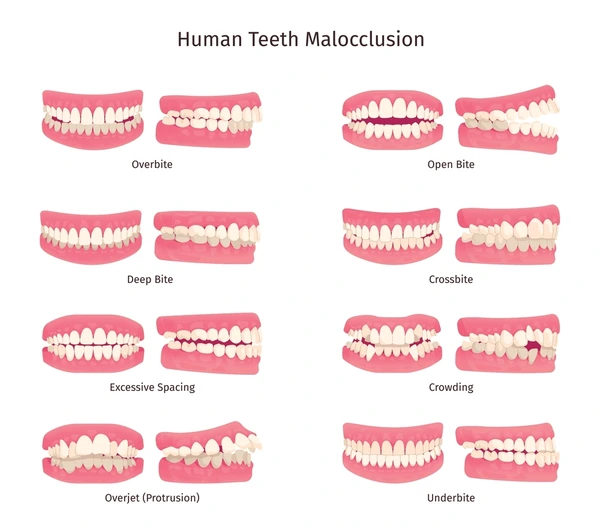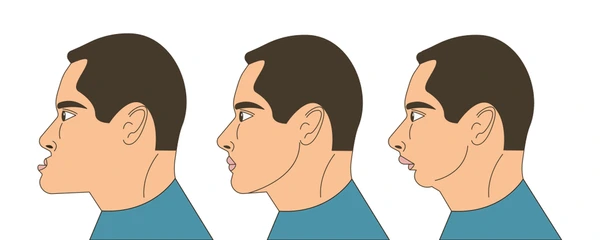In a world where a smile is a universal language, straight teeth are more than just an aesthetic asset—they are a cornerstone of oral health, confidence, and overall well-being. For many in Nepal, the journey to a perfect smile begins with understanding braces, a transformative orthodontic solution that addresses misaligned teeth, bite issues, and jaw discrepancies. Searches like “braces cost in Nepal,” “best orthodontist in Kathmandu,” and “Invisalign vs traditional braces” reflect a growing demand for clear, actionable information. At Sparsh Dental Clinic, we recognize that choosing braces is a significant decision, influenced by factors like cost, treatment duration, and lifestyle.
At Sparsh Dental Clinic, we understand the importance of a confident smile. Whether you’re dealing with crooked teeth, gaps, or bite issues, teeth braces in Nepal are an effective solution to achieve a straighter, healthier smile. We offer a range of options, from traditional metal braces to modern clear aligners, to suit your needs and lifestyle.

Braces are orthodontic devices that correct dental misalignments, such as overcrowding, gaps, overbites, underbites, and crossbites. These issues, if left untreated, can lead to difficulties in chewing, speech impediments, jaw pain, and even long-term problems like tooth decay and gum disease. For instance, crowded teeth are harder to clean, increasing the risk of plaque buildup, while an overbite can strain the jaw joints, contributing to TMJ disorders.
Orthodontic treatment in Nepal is essential for correcting improperly positioned teeth and jaws. Common reasons for getting braces include:

In Nepal, where dental awareness is rising, braces are no longer seen as a luxury but as a necessary investment in health. Parents seek “braces for kids” to address developmental issues early, while adults explore “Invisalign for professionals” to align their teeth discreetly. The key is to start treatment at the right time—early intervention (ages 7–14) can simplify correction, but modern orthodontics ensures it’s never too late for adults to achieve their ideal smile.
Misaligned teeth, also known as malocclusion, are a common dental issue in Nepal, affecting both children and adults. The lack of awareness about orthodontic treatments and limited access to specialized dental care in rural areas often leads to long-term complications. Some of the major effects of misaligned teeth in Nepal include:
Misaligned teeth can make brushing and flossing difficult, leading to plaque buildup, cavities, and gum diseases like gingivitis. In Nepal, where oral hygiene awareness is still growing, people with crowded or crooked teeth are at a higher risk of tooth decay and bad breath.
Many Nepali foods, such as rice, dal, and various meat-based dishes, require proper chewing for digestion. Misaligned teeth can make chewing difficult, leading to improper digestion and stomach issues. People may also experience jaw pain due to uneven pressure while biting.
Certain types of misalignment, such as overbites and open bites, can cause speech problems, making it difficult to pronounce certain words correctly. This can impact self-confidence, especially in students and professionals who need to communicate clearly.
Severe misalignment can lead to jaw strain and temporomandibular joint (TMJ) disorders, causing frequent jaw pain, headaches, and discomfort while opening or closing the mouth. Since many people in Nepal do not seek early orthodontic treatment, these issues often go untreated, leading to chronic pain.
In Nepali society, where appearance plays a role in personal and professional opportunities, crooked teeth can affect self-esteem. People, especially teenagers and young adults, may feel self-conscious about their smiles, leading to social anxiety and lower confidence in school, work, or social gatherings.
Misaligned teeth can increase the risk of chipping, breaking, or uneven wear due to improper bite alignment. This can lead to early tooth wear and the need for dental restorations like crowns or fillings.

Braces work by applying light continuous pressure on the teeth over a period of time, gradually shifting them into the correct position. The pressure stimulates the bone remodeling process, where the bone around the teeth breaks down and rebuilds, allowing the teeth to move.
The teeth is moved inside the bone. This process is guided and carefully monitored by your orthodontist over time. Over movement as a fast approach and stronger forces caused higher bone resorption and further complicates the process. Therefore, the movement should be slow to balance bone resorption and bone deposition process over time.
Braces work by exerting a constant force on the teeth. Here’s how the process works:
Applying Pressure: The archwire applies pressure on the teeth and their roots.
Bone Resorption: The pressure causes the bone on one side of the tooth to break down, creating space for movement.
Bone Deposition: As the tooth moves, new bone grows on the opposite side to hold the tooth in its new position.
Gradual Movement: This process continues over months or years until the teeth are perfectly aligned.
The duration of treatment depends on the severity of misalignment and the type of braces used. Generally:
Mild cases: 6 months – 1 year
Moderate cases: 1.5 – 2 years
Severe cases: 2 – 3 years
Braces can cause mild discomfort or soreness, especially after adjustments. However, the pain is temporary and usually fades within a few days. Pain relievers and orthodontic wax can help manage irritation. The pain is bearable and unbearable pain suggest that excessive forces are being induced upon your tooth. Please visit your dentist if the pain stays after 2-3 days of adjustment.
The evolution of orthodontics has introduced a variety of braces, each catering to different needs, budgets, and aesthetic preferences. Below, we explore the most popular options available in Nepal at Sparsh Dental Clinic:

If you prefer Aesthetics First: Prioritize Invisalign, lingual or ceramic braces for discretion.
If you want braces under Budget: Opt for metal braces for affordability.
Busy Lifestyle: Active individuals, sports person and media person may prefer clear aligners over fixed braces.
Age: Braces for adults often focus on aesthetics, while pediatric braces emphasize early correction.
Most dental clinics in Nepal offer a partial payment plan for orthodontic treatment, making it easier for patients to afford braces. The typical payment process includes the following steps:
X-Rays (Radiographs) – NPR 2,000 Total
Before getting braces, you will need two X-rays:
OPG (Orthopantomogram) – Provides a full view of the upper and lower jaw.
Lateral Cephalogram – Helps analyze jaw alignment and bite issues.
These X-rays are usually not available at the clinic and must be done at an external diagnostic center, costing around NPR 1,000 per radiograph.
Initial Deposit – NPR 10,000
When the braces are bonded to your teeth, you will need to pay an initial deposit of NPR 10,000 to start the treatment.
Monthly Installments – NPR 3,000 per Appointment
After the braces are placed, you will have monthly follow-up appointments for adjustments.
You will need to pay NPR 3,000 per visit until the total cost of the treatment is covered.
Orthodontic treatment is performed by a specialist dentist called an orthodontist. An orthodontist is a dental professional who has completed additional years of specialized training after earning a Bachelor of Dental Surgery (BDS) degree. They focus on diagnosing, preventing, and treating misaligned teeth and jaw irregularities.
During braces treatment, regular visits to the orthodontist are crucial to ensure the teeth are moving correctly and the braces are functioning properly.
Every 4 to 6 weeks – This is the standard interval for most patients with metal or ceramic braces.
Every 6 to 8 weeks – If using clear aligners, visits may be less frequent, as multiple sets of aligners are provided in advance.
Emergency Visits – If a bracket breaks, wire pokes, or any severe discomfort occurs, an additional visit may be needed.
Missing scheduled visits can delay treatment progress and extend the time needed to complete the orthodontic correction. So, if you have missed a visit or unfortunately had any emergency, do inform your doctor and try to rebook appointment in few days as possible.
Proper maintenance ensures efficient treatment and minimizes risks like tooth decay or broken brackets:

After months or years of wearing braces, the day finally comes to have them removed. The braces removal process is simple, painless, and usually takes 30 to 60 minutes.
Brackets and Wires Removal
The orthodontist uses a special tool to gently clip off the brackets and remove the archwire.
This process is painless, but you may feel slight pressure.
Cleaning Off the Adhesive (Glue Removal)
After removing the brackets, the orthodontist will use a polishing tool to remove the glue from your teeth.
This step makes your teeth feel smooth again.
Final Check and Impressions for Retainers
The orthodontist will examine your teeth to ensure everything is aligned properly.
A dental impression or scan may be taken to create your retainers, which will help maintain the new position of your teeth.
No, braces removal is not painful. However, some people feel slight discomfort or sensitivity, which goes away in a few days.
A retainer is a custom-made orthodontic appliance designed to keep teeth in their new position after braces or aligners. Teeth have a natural tendency to shift back to their original place, and retainers help prevent this relapse.
Prevents Teeth from Shifting Back – Teeth tend to move after braces, and retainers hold them in place.
Stabilizes Bone and Gum Tissue – Helps the jawbone and gums adjust to the new tooth position.
Maintains Your New Smile – Ensures long-term results after months or years of orthodontic treatment.
Full-time for 4 to 6 months after braces are removed.
Night-time wear for several years to maintain results.
Some people may need to wear a retainer for a lifetime to prevent teeth from shifting.
Price of Metal Braces: NPR 60,000
Price of Ceramic Braces: NPR 70,000
Price of Lingual Braces: NPR 1,50,000
Price of Invisalign: NPR 1,50,000
Price of Self-Ligating Braces: NPR 80,000
Hawley Retainer per arch: NPR 3,000
Begg’s Retainer per arch: NPR 3,000
Clear Retainer per arch: NPR 3000
{{ is_error_msg }}
Waiting Time {{ service_details.bookingpress_service_duration_val }} {{ service_details.bookingpress_service_duration_label }}
Price {{ service_details.bookingpress_service_price }}
{{ is_error_msg }}
{{ is_error_msg }}
{{ is_error_msg }}
Your appointment booking summary
Pay Locally
PayPal

“Braces are only for kids”: Modern orthodontics caters to all ages. Adult braces are increasingly popular in Nepal.
“Braces interfere with daily life”: With proper care, you can play sports, sing, or play instruments comfortably.
“Braces are purely cosmetic”: Correcting misalignments prevents gum disease, tooth loss, and jaw disorders.

Most cases require 12–24 months. Complex issues like severe overbites may extend to 36 months.
Yes! Options like braces with implants or bridges can align teeth while replacing missing ones.
For minor gaps, dental veneers or contouring may suffice. However, braces are irreplaceable for functional corrections.
For broken wires or brackets, visit your orthodontist immediately. Temporary fixes include using wax to cover sharp edges.
While India offers competitive pricing, travel and accommodation expenses make Nepal a cost-effective choice for most patients.
Braces are more than a dental procedure—they’re an investment in your health, confidence, and future. At Sparsh Dental Clinic, we combine cutting-edge technology, transparent pricing (braces cost in Nepal), and compassionate care to deliver results that transform lives. Whether you’re a teen excited to flaunt colorful ligatures or an adult seeking discreet Invisalign treatment, our team is here to guide you every step of the way.
Take the First Step Today!
📞 Call: 9766542294
📧 Email: sparshdental.pulchowk@gmail.com
🌐 Website: SparshDental.com.np
📍 Address: Behind Labim Mall, Pulchowk, Sri Marg, Lalitpur 44600